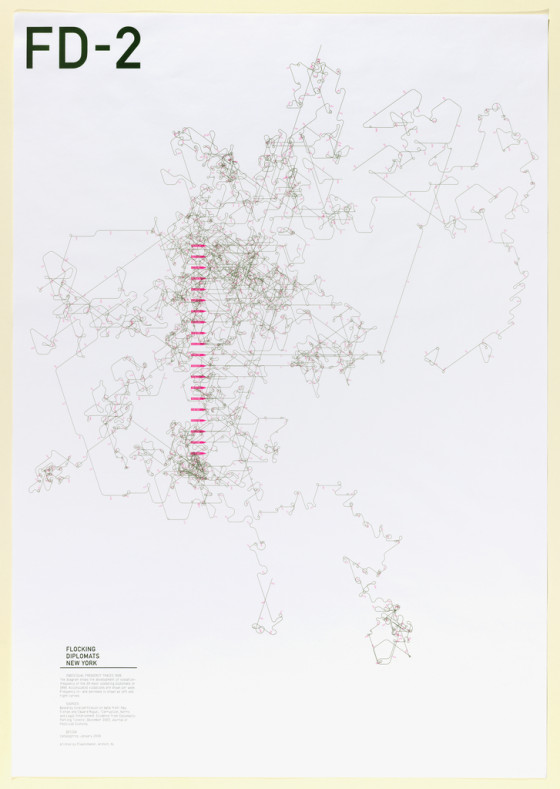Data visualization is the art and science of creating graphic representations of numerical data. The Flocking Diplomats series consists of multiple visualizations of a rich body of data concerning the parking violations of international diplomats in New York City. This conceptual project employs the poster as a research tool, much as “posters” are used in scientific conferences to share research outcomes as static graphics mounted to poster boards. FD-1 tracks violations hour by hour, 1999–2002, and plots them in relation to the position of the sun as seen from Central Park. FD-2 focuses on the twenty diplomats who perpetrated the most violations in 1999. Such works emphasize the of the designer as commentator, author, and journalist.

Poster, FD2: Flocking Diplomats New York: Individual Frequency Traces 1999, 2008. Designed by Catalogtree (Arnhem, Netherlands): Joris Maltha and Daniel Gross. Offset lithograph. Printed by Plaats Maken (Arnhem, Netherlands). 100.2 × 68.9 cm (39 7/16 × 27 1/8 in.). Gift of Joris Maltha and Daniel Gross, 2009-30-1/6.
Ellen Lupton is Senior Curator of Contemporary Design at Cooper Hewitt, Smithsonian Design Museum and Director of the Graphic Design MFA program at Maryland Institute College of Art.
The exhibition How Posters Work is currently on view at Cooper Hewitt through November 15, 2015. You can learn more at the exhibition homepage and find the book How Posters Work at SHOP Cooper Hewitt. #HowPostersWork
